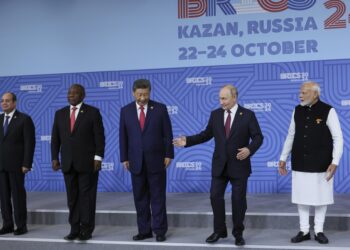File photos
Wifredo Lam (Sagua La Grande, Las Villas, Cuba, 1902–Paris, France, 1982), a mixed-race Chinese-Afro-Cuban who was trained as an artist in Europe at a time, between WWI and WWII, when the most important vanguard artistic movements were developing, has become not only one of the most important painters of Caribbean and Latin American modernism/avant-garde, but also of international high modernism.
Lam left Cuba for Spain in 1923 after obtaining a scholarship to study art in Europe. When the Spanish Civil War broke out, he enlisted on the side of the Republic, as a member of one of the militias that were defending Madrid. After that tragic and turbulent adventure (previously, he had lost his wife and son to tuberculosis), he immigrated to France, and his stay in the capital of Europe’s artistic avant-garde was fundamental to the development of his artistic language. In Paris, he became friends with Picasso, and held exhibits with him and other, no less singular, painters, such as Braque, Léger, Klee, Ernst, Miró, Gris and Chagall. He went through a baptism in fire and was shaped by surrealism and the language of Cubism. However, given the advance of Nazi fascism, Lam, like many other artists, went to America, but in his case it was a round trip back to his roots. He arrived in Cuba in August 1941, at the age of 39. It was the completion of a stage of academic training, political vicissitudes, apprenticeship and assimilation of the aesthetic and conceptual sensitivities of the avant-garde, heartbreak and maturity as a man and as an artist.
Lam remained in his native country for a number of years and then returned to France. However, his time in Cuba (to which a trip to Haiti between 1945 and1946 should be added) had a resounding, definitive impact on his art. It is known that the aesthetics of African primitive art were meticulously studied by painters like Picasso, but generally speaking, many European avant-garde artists were especially interested in the other culture of the West — cultures perceived as exotic, primitive and savage as opposed to the rational and learned patterns of Western modernism. For his part, Lam was able to drink directly in Cuba from the myths, images, legends, mysteries and visual qualities of Afro-Cuban religions. Therefore, during this stage of his pictorial creation, Lam achieved something that was very important for the Latin American vanguardists of the time: an organic, original connection between the most contemporary visual arts language (developed by the European vanguardists) and the cultural traditions of each country. With orientation provided by Caribbean folklore scholars like Lydia Cabrera, Fernando Ortiz and Alejo Carpentier, Lam began to study and discover the unqiue, rich qualities of his melting-pot culture — of which he himself was a singular expression, a living result of fertile intercourse between Africa, Asia and Europe.
That was when he began his work of new aesthetic searches in the place where the national identity of the peoples of the Caribbean islands first began to form: the landscape. The Jungle (1943) — perhaps the best-known work by this Cuban painter — was the first major result of that reorientation, both in theme and form, seen in his artistic production after returning to Cuba. In this painting, the jungle is a sugar cane field, and the sugar cane field is a profound symbol in the cultural imagination of the Caribbean islands, which were plantation colonies controlled by European powers. The natural jungles of these islands were destroyed to plant sugar cane. In this way, the sugar cane field became a visual symbol (the new jungles), as an extended, typical landscape of the countryside on the islands. However, it is also a symbol that refers to historic development that was marked by colonization, slavery, exploitation and economic plunder. And after independence was won — in the case of Cuba, for example — the sugar cane field continued to be the foundation of a one-crop, underdeveloped economy. Lam condenses history into that dense jungle of sugar cane, where extravagant beings with elongated hands and feet and prominent glutei and breasts seem to be submerged in a witches’ Sabbath, a festivity, surrounded by a night as blue and dense as the field itself. All of that symbolic imagery, which is background and figure at the same time, expresses a spatial and temporal superimposition of historical processes, which open up to our eyes a profound poetic atmosphere.
Now, while this discovery and incorporation of the African cultural womb — so alive and strong among the Caribbean peoples — was fundamental in his movement toward a new level of artistic creation, Lam was a vastly cultured man, which is why it is impossible to reduce the many symbolic references that are interwoven in his work to a single cultural reference. Surely, Lam drank from all the great cultures, especially those of his three branches of ancestors: Asian, European and African. The best evidence of that is the harmonious and dynamic convergence of animal, human and vegetable. Except for the fact that in his work, one cannot find a simple, literal state, the stereotypes that are superficially associated with different cultural traditions. Wifredo Lam, like nations with a high degree of mixture between different cultures and races, created his own aesthetic imagination on the basis of appropriation, synthesis, mixture, the elaboration of sensitive worlds, the rationalization of the mythical and the poetization of the rational.

a1_1.jpg)


-60-x-50-cm-Impresión-lightjet-sobre-KODAK-Endura-papel-fotográfico_0-120x86.jpg)

.jpg)


